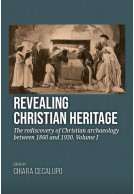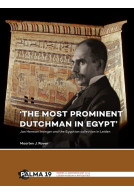Au fil de l’os (Paperback)
Économie et société chez les Rèmes et les Suessions par le prisme de l’archéozoologie
Imprint: Sidestone Press
Pages: 266
Illustrations: 94bw/48fc
ISBN: 9789088903618
Published: 30th June 2016
Script Academic & Professional
Pages: 266
Illustrations: 94bw/48fc
ISBN: 9789088903618
Published: 30th June 2016
Script Academic & Professional
You'll be £45.00 closer to your next £10.00 credit when you purchase Au fil de l’os. What's this?
+£4.99 UK Delivery or free UK delivery if order is over £40
(click here for international delivery rates)
Order within the next 1 hour, 29 minutes to get your order processed the next working day!
Need a currency converter? Check XE.com for live rates
(click here for international delivery rates)
Order within the next 1 hour, 29 minutes to get your order processed the next working day!
Need a currency converter? Check XE.com for live rates
In Julius Caesar’s Commentaries on the Gallic War, the term “oppidum” – used to designate any fortified community – indicates those particular Gaulish sites which are characterized both by a strong tendency to social cohesion and the development of a centralized territorial policy. From a chronological point of view, these sites are limited to a very precise period: the two last centuries BCE, from La Tène D1 to La Tène D2 (120–30 BCE).
The purpose of this study is to define the role of animal production within the new urban structures. Hence, the research focuses on the specific economical aspect of meat resources and their management: what is the place of this activity in the economy of Gaulish peoples? Is it possible to detect within the sites any precise organisation in sectors in relation to the butchering activities? What about the meat imports and, consequently, the interactions between the communities and the sites of production? Who was the target of the produced food resources? Were they part of some large-scale “sales strategy”.
The research aims to approach these economic issues through the study of the fauna remains recovered mostly from Condé-sur-Suippe, in the territory of the Remi, and also from Villeneuve-Saint-Germain, the capital of the Suessiones. Dating respectively from 120 to 90 BCE and from 90 to 40 BCE, these fortified communities are among the most important in Europe, not only because of their size and of the exceptional conservation of their town planning but also because of their almost unequalled faunal wealth. The comparison between the two sites and their neighbours, i.e. contemporaneous rural sites of an a priori inferior status will hence attempt to cast a new light on the economic role of these fortified communities which are the outcome of a long stratification process within the Gaulish society.
Other titles in Sidestone Press...















